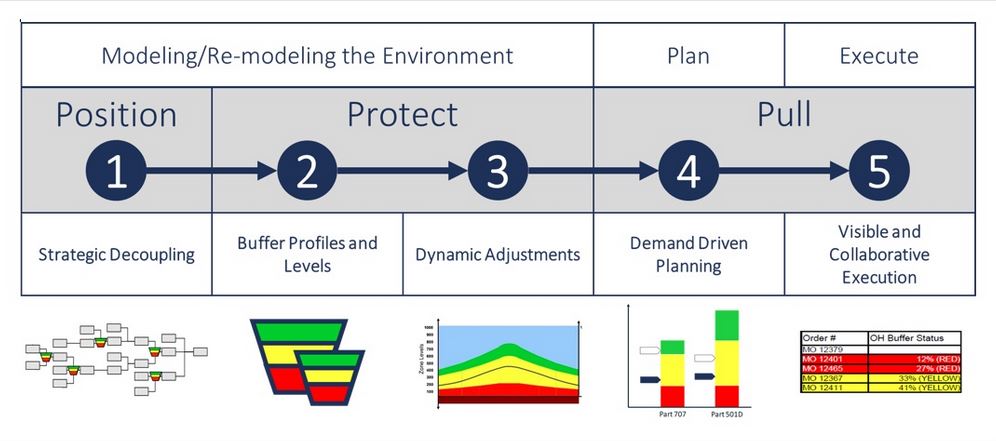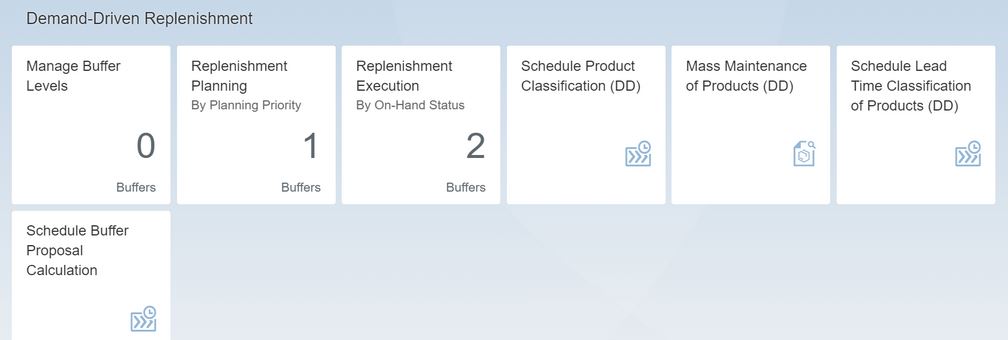Demand-Driven Material Requirements Planning
Today's logistics chain, with greater volatility and complexity, needs planning functions that proactively respond to requirement fluctuations in real time. This is where demand-driven material requirements planning comes into play.
Traditional material requirements planning in SAP ERP is essentially based on forecasts. However, we know that forecasts cannot always accurately predict the future because they are based on past activities.
Even though we can limit the fluctuation margin through procedural discipline, robust quality processes, reliable sales partners and other factors, some uncertainties will remain. There will always be surprises and bottlenecks in material planning.
With the transition to SAP S/4HANA, which companies will inevitably make when SAP ceases support for SAP ERP 6.0 in 2027, both the classic MRP capability and optimized DDMRP function will be available in S/4HANA CORE.
Optimized demand-driven material requirements planning (DDMRP) serves to minimize the damage caused by unpredictable fluctuations in demand within the supply chain. Unlike traditional MRP approaches, DDMRP improves material control and replenishment by acting on demand, thereby making it more sensitive and responsive to supply and demand fluctuations that could lead to bottlenecks, production disruption, and chaos in production facilities.
Sound Familiar?
- Corporate supply chains are characterized by increasing volatility and uncertainty.
- Companies want to minimize the risk associated with fluctuations in demand.
- They wish to reduce fluctuations within the supply chain and stabilize the material flow.
- They also wish to stabilize the production environment to prevent missing parts and incomplete orders.
The solution to these challenges lies in the implementation of SAP S/4HANA. Integrating SAP DDMRP on HANA eliminates the need for an additional demand-driven MRP system.
What Is DDMRP?
DDMRP is a demand-driven material requirements planning approach that aims to achieve high deliverability and short lead times through the use of one or more buffer zones along the entire supply chain. These buffers are intended to cushion possible fluctuations in demand and compensate for forecasting errors.
DDMRP is based on actual orders placed, supplemented by buffers. It follows the pull principle whereby each station within the supply chain is supplied with the exact quantity required. The software ensures that the inventory of goods is adjusted to demand. If the inventory falls below the critical quantity, reorders are automatically placed to ensure the deliverability of future orders.
DDMRP comprises the following five stages:
1. Strategic inventory positioning
2. Buffer profiles and levels
3. Dynamic adjustments
4. Demand-driven planning
5. Visible and collaborative execution


